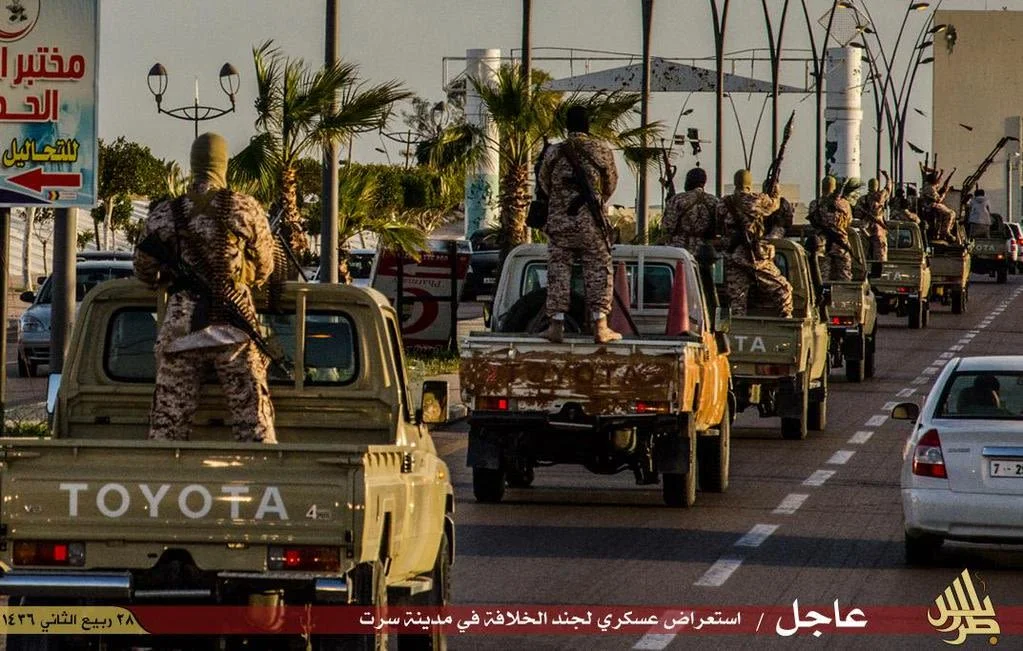"Another Toyota"
I recently had one of those moments when I started watching the first season of Tom Clancy's Jack Ryan. The series features several scenes set in the Middle East. But I've also noticed this in films such as Kandahar.
A group of armed fighters is driving through the desert. Who would have thought? They are riding in a Toyota pickup truck. At first, I didn't think anything of it. After all, most things in TV series and films are fictional. A Toyota just seems more authentic than a Mercedes.
But then I started paying more attention to it. Whether they're in the news, in documentaries, or in photos in the newspaper, Toyotas are everywhere. Hiluxes and Land Cruisers are particularly common. Sometimes they are so badly damaged that you wonder how they can still drive.
That's why I asked myself: Why Toyota of all companies?
Proven for 60 years
Toyota has had a presence in the Middle East for quite some time. The Land Cruiser and later the Hilux arrived in the region as early as the 1960s. They were often imported privately, but also by large buyers such as aid organizations and oil companies. Initially, Toyota's exports focused on countries such as Saudi Arabia, Kuwait, and the United Arab Emirates. Later, however, more and more local dealers emerged.
By 1987, the Hilux had become world-famous due to the so-called Toyota War between Libya and Chad. Chadian troops used Hilux and Land Cruiser models to gain a mobility advantage over the Libyan army. This enabled them to win the decisive battles. Incidentally, France and other Western countries financed and supplied the vehicles.
What makes Toyotas so special?
Yes, these cars are special because of their robustness and off-road capability. Regions in the Middle East often have poor roads and harsh climates. A car that can handle such conditions would be ideal here.
Additionally, spare parts are inexpensive, and there are many well-developed workshops. This means the cars are reliable and easy to repair if something breaks.
Another advantage of Toyota Hilux models is that they can quickly be converted into "technicals". These are normal pickup trucks with heavy weapons mounted on their loading areas. Most of us have probably seen pictures of them. They are often used in war because they are highly mobile and heavily armed.
Former U.S. Army officer Andrew Exum even said that the Toyota Hilux is the vehicle equivalent of the "AK-47" (machine gun) because both are known for their robustness and reliability.
The Supply Chains of War
Toyota repeatedly emphasizes that the company does not sell directly to armed groups. I mean, that would be bad for marketing, right? However, car manufacturers cannot control where their cars end up. They have no insight into resales or the black market.
Nevertheless, Toyota vehicles appear in almost every conflict. They often take a mixture of legal and illegal routes.
- Aid organizations and UN missions: The vehicles are either sold locally after the missions or remain in the country.
- Government procurement: States purchase large quantities and distribute them to allied groups.
- Through the used car trade: Many pickups find their way into conflict zones, especially via the Gulf states.
- Smuggling: Vehicles are transported illegally across borders and sold on black markets.
Why Toyota of all companies?
The answer is actually quite simple. Toyota stands out from other brands, such as Ford and Mitsubishi, because of its:
- Mass availability: Millions of Hilux and Land Cruiser vehicles have been produced worldwide.
- Value for money: They are cheaper than many Western competitors with similar performance.
- They are easy to maintain. Spare parts are available almost everywhere, and mechanics are familiar with the models.
- Durable: Even old models with several hundred thousand kilometers are still operational.
A car that makes history
For decades, the Toyota Hilux has been much more than just a vehicle in the Middle East. It is a tool, a symbol, and sometimes an icon. It is a faithful companion to aid organizations, a workhorse in the desert, and a feared "technical" in conflict zones. It appears wherever reliability is more important than comfort.
Perhaps it's no coincidence, then, that it dominates the desert in films and TV series in an almost clichéd way. Whether in fiction or reality, when the camera pans across the streets, there's a good chance a Toyota will be in the shot.
That's exactly why I find myself thinking more and more often: "Another Toyota".
